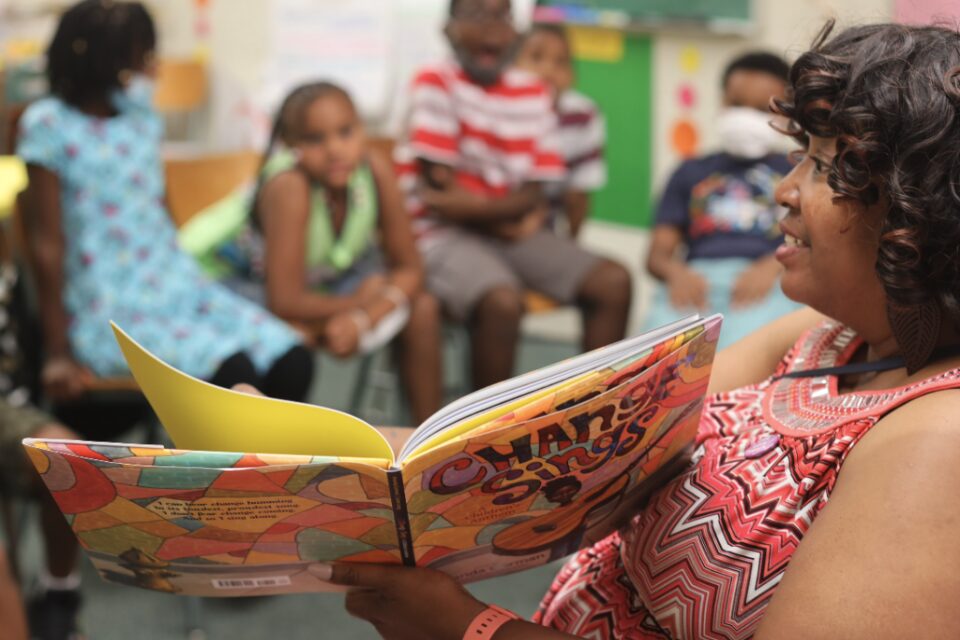Leaders from the Michigan Conference’s Children’s Defense Fund (CDF) Freedom School Program suggest every child should read these 10 books to celebrate Black History Month.
The Michigan Conference’s Children’s Defense Fund (CDF) Freedom School Program operates two sites in Detroit — Second Grace and Conant Ave UMCs — and two in Flint — Bethel and Calvary UMCs. These Freedom Schools are Step 2 EngageMI Ministry Partners.
Freedom Schools empower students to believe in their ability and responsibility to make a difference while instilling a love of reading to help them avoid summer learning loss. Freedom Schools use culturally relevant pedagogy and high-quality books so that children and youth better understand themselves and all they have in common with others in a multiracial, multicultural democratic society.
In celebration of Black History Month, leaders in the program have shared these book titles that every child or youth should read. Some are written for young children, and others are for older readers and teens. Please check the age level before borrowing or purchasing.
Will you join them in learning about the culture, history, and achievements of Black Americans by finding these books at your library or purchasing them from a local retailer? And then find a comfortable spot and read them with the young people in your life. Let their stories educate and inspire.
The Eagles Who Thought They Were Chickens by Mychal Wynn
This is an African folktale chronicling the birth of eagles in a chicken yard. Separated from their homeland, unaware of their historical past, and ridiculed for their differences, they struggle with their self-identity until another eagle encourages and inspires them.
The Skin I’m In: A First Look at Racism by Pat Thomas and illustrated by Lesley Harker
This book spells out in simple terms why people may feel threatened by racial differences, what it feels like to be bullied because your skin is a different color, and why it hurts everyone to judge people by their skin or culture. It will encourage positive acceptance and openness about differences and suggest ways for children to celebrate their own cultural heritage without belittling someone else’s.
Hair Like Mine by LaTashia M. Perry and illustrated by Bea Jackson
This book is a fun and easy read following a little girl who doesn’t like that her naturally curly hair looks different from the other kids around her. On her quest to find someone with hair like hers, she soon realizes we are all unique and special in our own way.
I Am Every Good Thing by Derrick Barnes and illustrated by Gordon C. James
This beautiful book encourages readers to celebrate everything that makes them who they are. Kids learn they can be a leader, an explorer, the life of the party, and an undisputed champion.
Let the Children March by Monica Clark-Robinson and illustrated by Frank Morrison
This story of the 1963 children’s march in Birmingham during the Civil Rights Movement offers a kid’s perspective and shows that children can make a big difference.
Grandpa, Is Everything Black Bad? by Sandy Lynne Holman and illustrated by Lela Kometiani
When Montsho, an African American boy, asks his grandfather, “Is everything black bad?” his grandfather tells him about his African heritage and how his dark skin and heritage are very good things.
This is the story of an ordinary African American girl who witnesses extraordinary events in this first-person account of the Greensboro, North Carolina, sit-ins of 1960.
Nelson Mandela by Kadir Nelson
This book tells the story of a young boy’s determination to change South Africa and of the struggles of a man who eventually became the president of his country by believing in equality for people of all colors.
Claudette Colvin: Twice Toward Justice by Phillip Hoose
Before Rosa Parks, there was 15-year-old Claudette Colvin. Read this biography, which is the first in-depth account of an important yet largely unknown civil rights figure. This book is for teens aged 13-17.
This book tells the epic story of a young girl torn from her African village, sold into slavery, and stripped of everything she has ever known — except hope. This book is for teens aged 14 and up.
Last Updated on February 27, 2024

